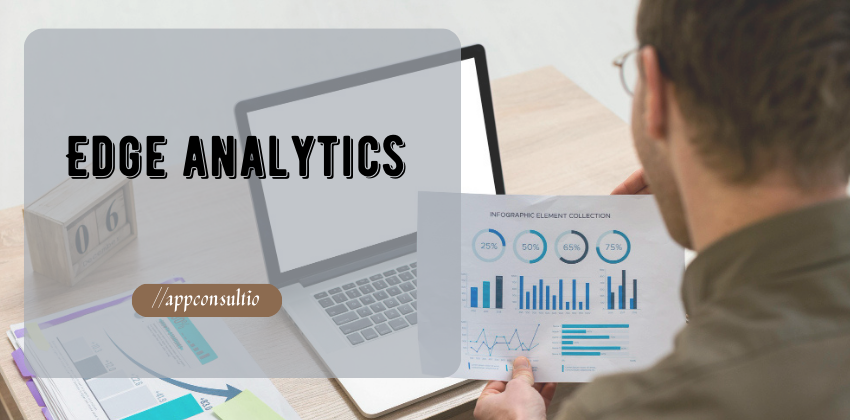
The internet revolution has profoundly changed how businesses operate, putting data at the forefront. Traditional methods of measuring success, like advertising and sales figures, have taken a back seat to the raw power of data. This data isn't just numbers; it's rich with valuable information like user profiles, activities, email addresses, and phone numbers. The Internet of Things (IoT) has amplified this data explosion, offering a treasure trove of insights derived from server interactions. These insights often reside on the "edge," where data is generated, like sensors, devices, or machines. However, sending all this data to a central location for analysis can take time and effort. This is where edge analytics steps in.
Edge analytics is the superhero that processes data right where it's born, on the edge. It's lightning-fast, providing real-time insights that can drive immediate action. Think of it as having a mini-brain on each device, making quick decisions and feeding valuable information back to the central hub. This is a game-changer for various industries, from healthcare to manufacturing. Imagine a healthcare device that instantly analyzes a patient's vital signs and sends only the crucial information to doctors, reducing delays in treatment decisions.
Edge analytics is a solution that addresses three critical challenges in the world of data-driven decision-making:
It reduces latency, ensuring swift actions can be taken when waiting for data to travel to a central location. Back is impractical, such as in remote locations or on oil rigs and aircraft.
It enables the scalable processing of analytics. As more devices connect to the network, central data analytics can become overwhelmed, but edge computing allows organizations to expand their analytical capabilities by decentralizing data processing.
Edge analytics resolves the issue of low bandwidth networks.
Transmitting data from numerous edge devices can strain bandwidth and incur high costs.
1. Data Security - Edge analytics offers significant advantages, particularly in the realm of security. When critical business and operational processes depend on timely and actionable data, relying on a single channel to transmit all your data to a cloud analyzer can leave you vulnerable to various risks. Edge computing enhances security by allowing data to be processed and analyzed closer to its source, at the edge. This means that sensitive data doesn't need to traverse long distances over potentially insecure networks, reducing exposure to cyber threats and unauthorized access.
Moreover, edge analytics facilitates compliance with local regulations and privacy standards, addressing concerns related to data sovereignty. It ensures that data generated and processed within specific regions stays within those regions, mitigating compliance risks and potential legal challenges. By offering a more secure and compliant data processing approach, edge analytics empowers businesses to make informed decisions while safeguarding their critical operations and data assets.
2. Cost Efficiency - Edge analytics offers a strategic advantage in data management. By strategically storing and processing data at edge locations, businesses can significantly reduce the reliance on costly data transmission capacity to interconnect all their operational sites. This translates into substantial cost savings by diminishing the need for expensive bandwidth connections across various locations.
It's crucial to note that edge computing complements rather than replaces cloud solutions. It's about optimizing operational costs by simplifying data flow, ensuring that data is processed efficiently where it's generated, and minimizing unnecessary expenses.
3. Scaling Data - One of the significant advantages of edge analytics is its ability to handle the growing volume of data and the proliferation of connected devices. In today's data-driven world, there's an ever-increasing demand for processing and analyzing vast amounts of data. Centralized data analytics can quickly become overwhelmed, leading to bottlenecks and delays in decision-making.
Edge analytics alleviates this pressure by decentralizing processing and analytics capabilities. Instead of funneling all data to a central location, it allows data to be processed closer to where it's generated—right at the edge. This approach empowers organizations to scale their processing and analytics capabilities seamlessly. As more devices and sensors are added to the network, edge computing can efficiently distribute the workload, ensuring that data is processed promptly. This scalability is crucial for industries such as IoT, manufacturing, and healthcare, where the volume of data generated is growing exponentially. With edge analytics, businesses can efficiently manage and analyze data at scale, making it a valuable asset in today's data-intensive landscape.
In conclusion, the internet revolution has transformed business, emphasizing data-driven decisions. Edge analytics is the game-changer, bolstering data security, reducing costs, and enabling scalable data processing. It's not just technology; it's a strategic necessity in our data-centric era.